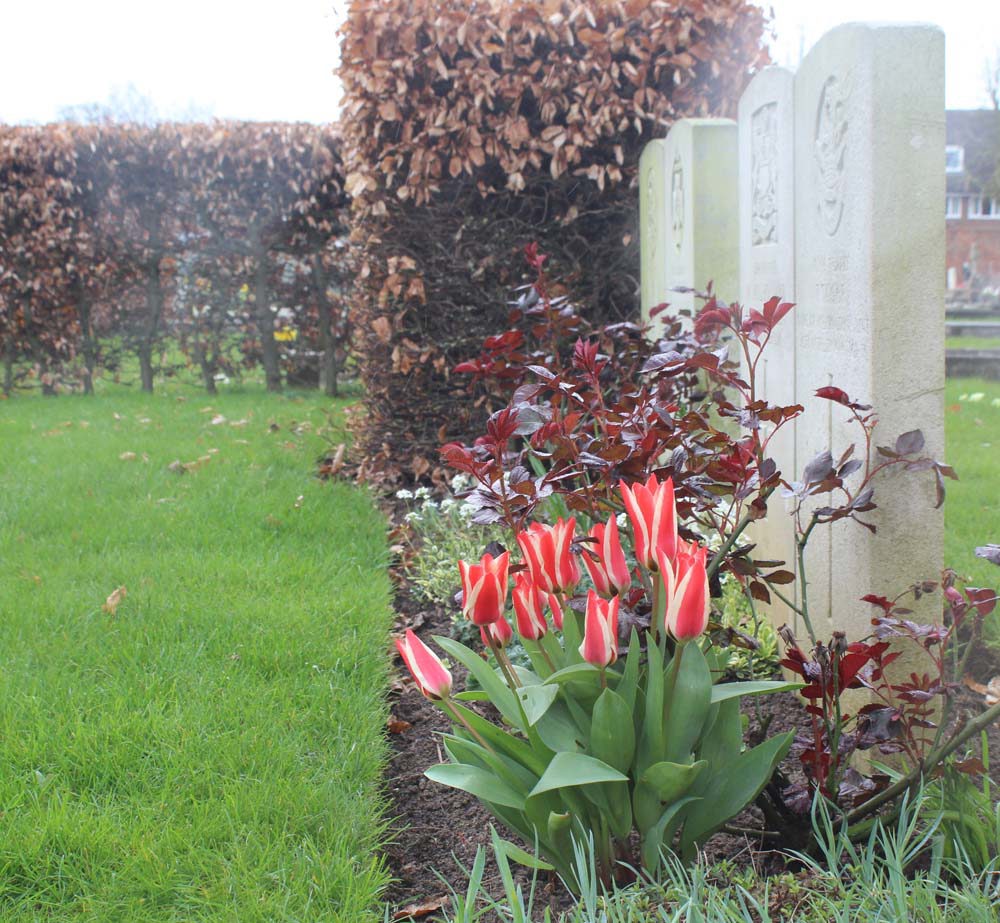13 April 2023
PREPARING FOR SPRING AS A CWGC GARDENER
CWGC gardener Michael Pettifer describes some of the horticultural work that he and other gardeners have been doing to prepare for spring in the UK.
All article images provided by Michael Pettifer
Spring gardening preparations from a CWGC gardener
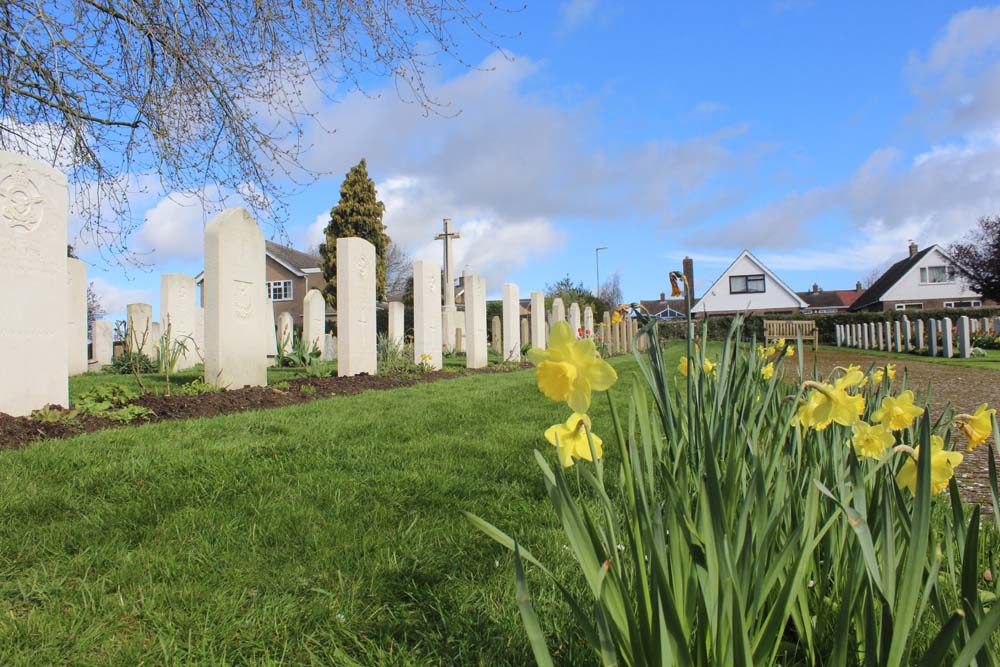
Learn how our UK gardening teams prepare for spring.
Spring is here and the daffodils, hyacinths, and primulas are just a few of the early performers putting on a show in Commonwealth War Grave Commission borders across the UK.
As a CWGC gardener in the East region, this is one of my favourite times of the year, although also one of the busiest as the growing season starts with a bang.
Before the borders started filling with colour, however, a significant number of horticultural tasks had to be completed to get ready for Spring.
With the CWGC’s commitment to reducing the impact our work has on the environment, those tasks had to be completed while reducing our chemical footprint as much as possible. Importantly, this meant new ways of working and prioritising certain jobs over others.
Renovation projects to prepare for Spring and beyond
The period from January to the end of March is the perfect time for me to complete important renovation projects before I need to get back to a full mowing, edging, hedge trimming, and weeding regime as the weather gets warmer.
Tasks such as the closing in of borders, turf repairs, rose pruning, mulching, fertilising and feeding, and headstone cleaning, have all been high-priority jobs at my sites across Lincolnshire and Nottinghamshire.
One of the bigger renovation projects this year took place at Cranwell (St Andrew) Churchyard in Lincolnshire.
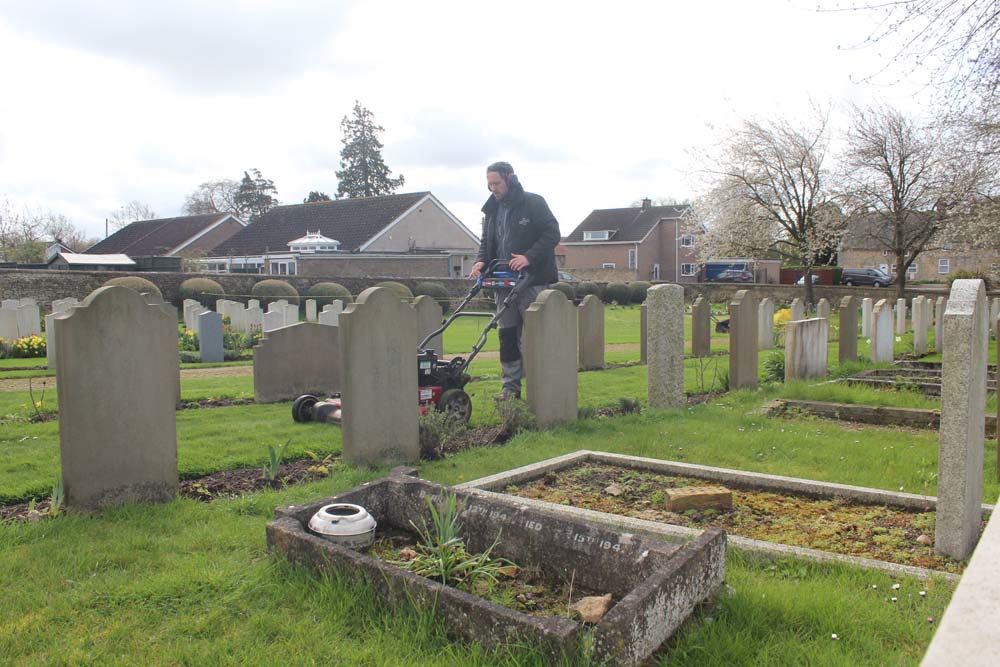
Hard work now pays dividends later in the year with beautiful blooms across our sites.
Last year saw the complete renovation of one side of the CWGC site at Cranwell, which included re-turfing, re-setting of headstones, and replanting of half the site. This year, replanting the other side of the site was a priority.
The East’s Regional Operations Coordinator, Richard Marsh, started by putting together a planting scheme – one that complimented the other schemes planted up last year at the site – while I removed all existing plants from the borders, before digging in large amounts of organic matter to improve the quality of the soil.
CWGC planting schemes are always designed around achieving an English country garden feel, with rose varieties like ‘Remembrance’ at the heart of the design – and this same idea was applied to Cranwell.
Beyond the addition of new roses, I planted combinations of herbaceous ground cover ‘anti-splash’ plants in front of the headstones, and larger herbaceous plants and shrubs (‘dots’ and ‘intermediates’) between the headstones to add interest.
Like in most CWGC planting schemes, plants repeat every five headstones at Cranwell, creating a theme as you look down the borders and across the whole site.
It has now been a few weeks since the last bare-root roses and bulbs were put in the ground. I would highly recommend a visit to the Cranwell site if you get a chance – it will look great as the plants grow and fill out the borders in the coming years.
Ensuring healthy plants and turf for the year ahead

Filling up with important soil and ground treatments.
Another job I’ve been doing in preparation for the growing season is applying a slow-release turf fertiliser at all my sites, which also doubles as a moss killer. MO Bacter, the granular product that I use for this, kills all moss in the turf and provides vital nutrients to the grass for approximately 100 days.
Not only does the nitrogen content in this product make the grass greener and thicker-looking, but giving the grass a boost at the start of the year helps to control weed populations in the turf and increases pest resistance throughout the year.
Importantly, this product is organic and the nutrients in it are derived from feather meal and cacao shells – it is also completely harmless to animals and wildlife.
By using products like this as gardeners, we are aligning with the CWGC’s mission to heavily reduce our chemical footprint and improve environmental sustainability across the organisation.
March was the time to carry out a hard prune of the floribunda roses at my sites. I started by removing any dead, diseased, or damaged plant material, before significantly reducing the size of the plant so that only three or four of the healthiest stems remained, standing no more than approximately 30cm in height.

Pruning and planting at borders is an important part of spring prepartion.
I aimed for a traditional ‘goblet’ shape when pruning, looking to achieve a balanced finish to optimise future growth and maintain good airflow through the plant. I also dug in some rose feed around the base of the plants to encourage healthy growth and help protect against pests and diseases.
Roses weren’t the only plants in need of feeding in early spring – I also dug in some blood, fish, and bone around the base of many other plants in the borders. This fulfils the macro NPK (nitrogen, phosphorus, and potassium) nutrient requirements of those plants, which should boost plant health and kick start growth in spring, and in some cases flowering.
Again, this also serves to protect the plants against pests and diseases throughout the year, as strong plants do a better job of protecting themselves.
I also tried to find as much time as possible to mulch the borders at my sites. We have a couple of different organic mulches we use depending on what we want to achieve, but this year I’ve mainly focussed on applying a thick layer of well-rotted manure-based mulch from Mr Muck.
Not only does this improve the quality of the soil, its structure, and its nutrient content, but it also helps to suppress weeds in the borders – something I know I’ll be grateful for in a few months.
Filling gaps in our borders
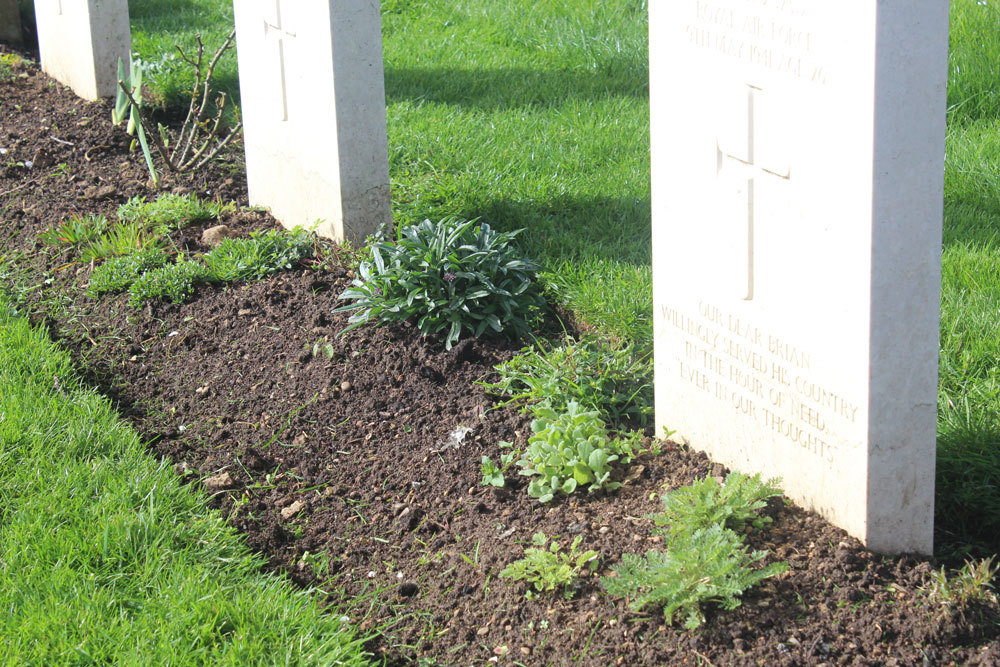
Working on the borders ensures our sites are properly cared for and verdant come spring.
My preparation for spring this year also included filling any gaps in the borders where plants may have failed.
The plants I used to fill those gaps had to fit the existing planting scheme already in place. This wasn’t only to ensure that the border continued to look nice but to make sure that any plants that went in would survive and thrive.
‘Right plant, right place’ applies to CWGC planting schemes as well.
Early last year, a group of gardeners got together to replant the CWGC site at Coningsby Cemetery.
Little did we know that Coningsby was about to experience the hottest temperature ever recorded in the UK at 40.3 degrees centigrade.
These extreme temperatures, paired with the fact that the site is set on stony, fast-draining soil, meant that plant losses were inevitable.
Early this year, I looked at replacing some of those plant losses, but not before looking at which plants, in particular, had done badly and which had survived the extreme conditions.
As gardeners, we’re increasingly having to expect that more extreme weather events might be just around the corner, as well as more extended dry spells.
It is more important than ever that the plant choices I make are the right ones.
I now record every failed plant, making notes about when, where, and why it has failed or not done as well as expected. This way a record is built up over time, ensuring that previous mistakes are not repeated.
Turf repairs
The end of winter and beginning of spring is also the perfect time to make repairs to any areas of turf that require it. Badgers, moles, rabbits, and other wildlife, always do their best to undo the hard work of CWGC gardeners.
This year, the local badger population at Manby (St. Mary) Churchyard did some pretty impressive turf digging, and not for the first time.
As much as it can be frustrating making the same repairs year after year, I remind myself that it is their natural habitat and they are only playing out their natural behaviours.
In my opinion, it is we gardeners that have to adapt to gardening around them, so that inevitably means making fixes.
I made repairs at this site by removing damaged turf areas, using top soil to level out and provide good conditions for germination, before applying grass seed evenly to the area and watering.
Evaluating and reviewing to focus our work
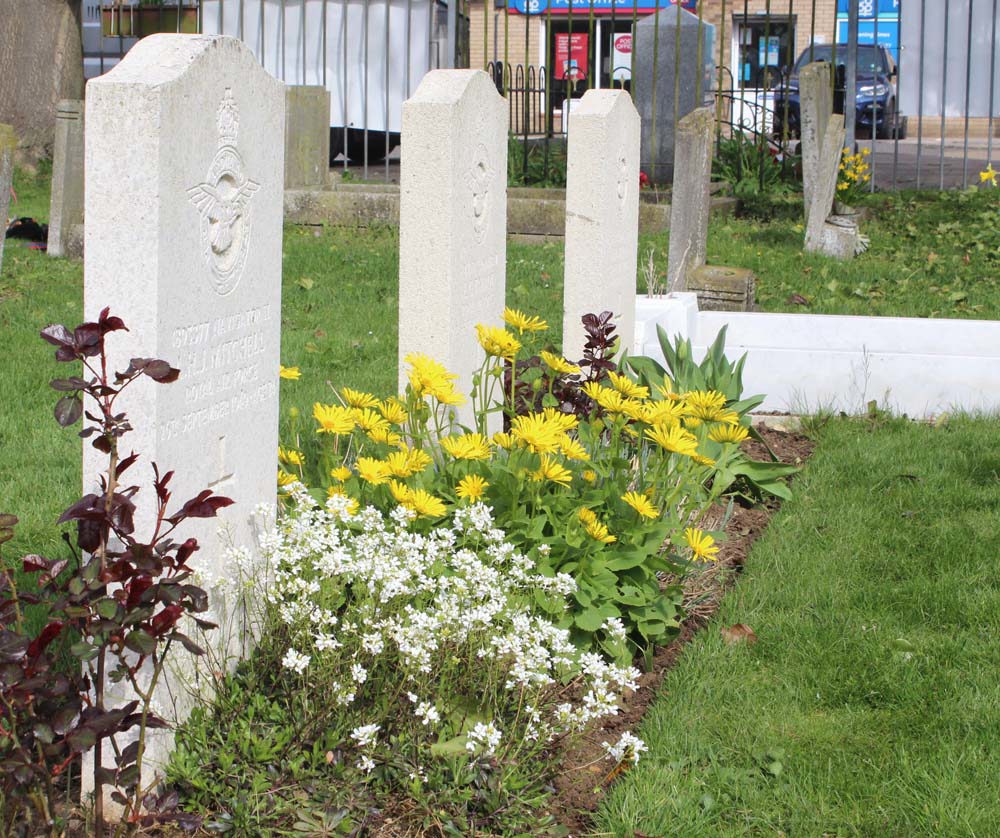
One of the final activities I did at the end of winter and beginning of spring was to conduct a quarterly evaluation at each of my sites.
I send review documents to head office so that managers so decision makers can form an understanding of what work needs to be done where.
By rating my sites against a set criteria, something every gardener does across the country, the CWGC can understand how sites are developing over time and prioritise any work that is needed to make improvements in the coming months and years.
Now the real work begins as fertilisers and feeds kick in and everything seems to be happening all at once – border plants are waking up, the grass is growing, and weeds threaten to overrun the moment I turn my back.
Seeing improvement is one of the great things about being a gardener for the CWGC and I can’t wait to see how my sites develop over the coming months.
Learn more about how we care for Commonwealth War Graves sites worldwide
The Commonwealth War Graves Commission estate covers over 23,000 sites in 150 countries and territories worldwide.
Our global teams work tirelessly to ensure each and everyone is cared for.
Visit our Caring for our Sites page for more information on how we tackle this huge horticultural and maintenance challenge.




